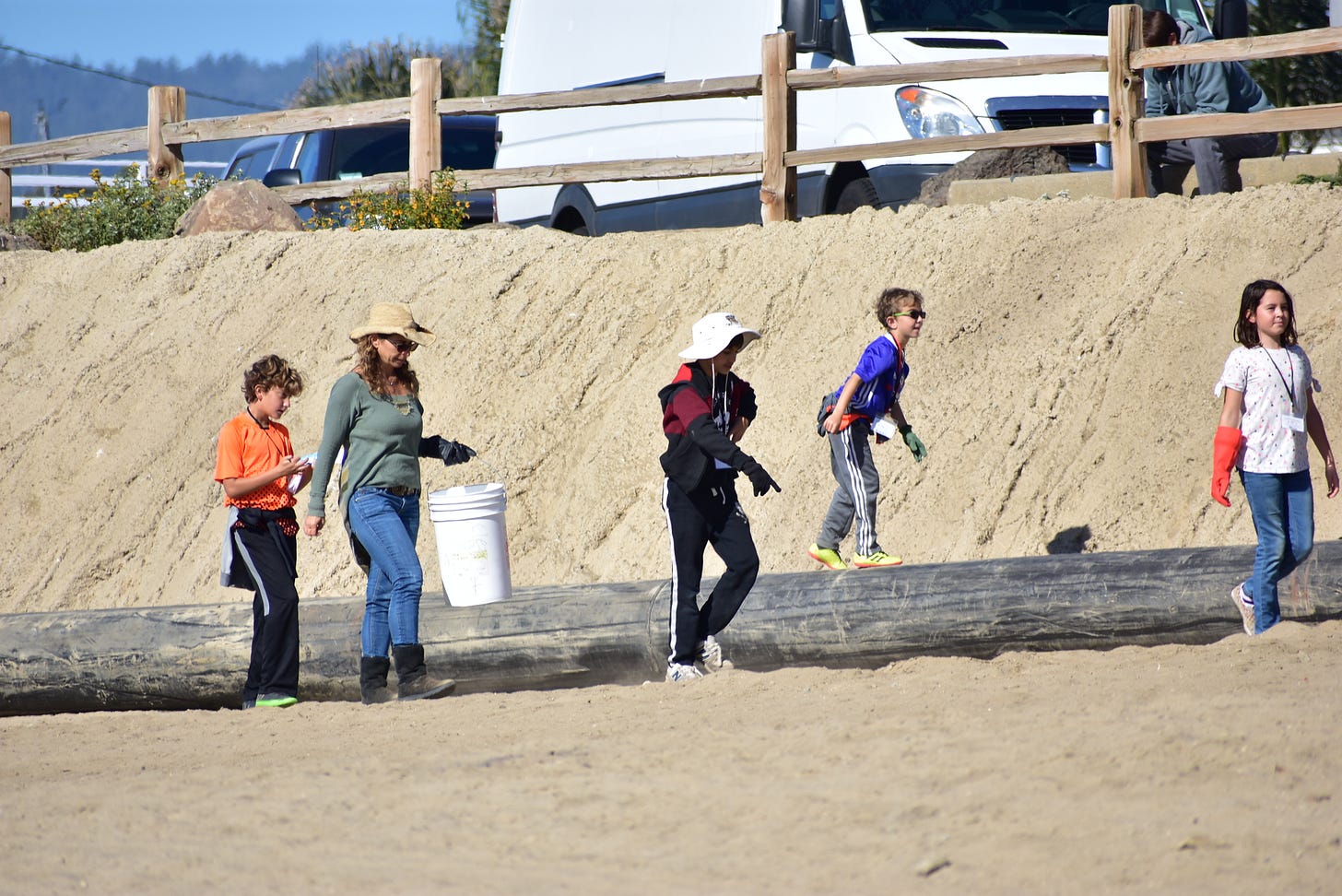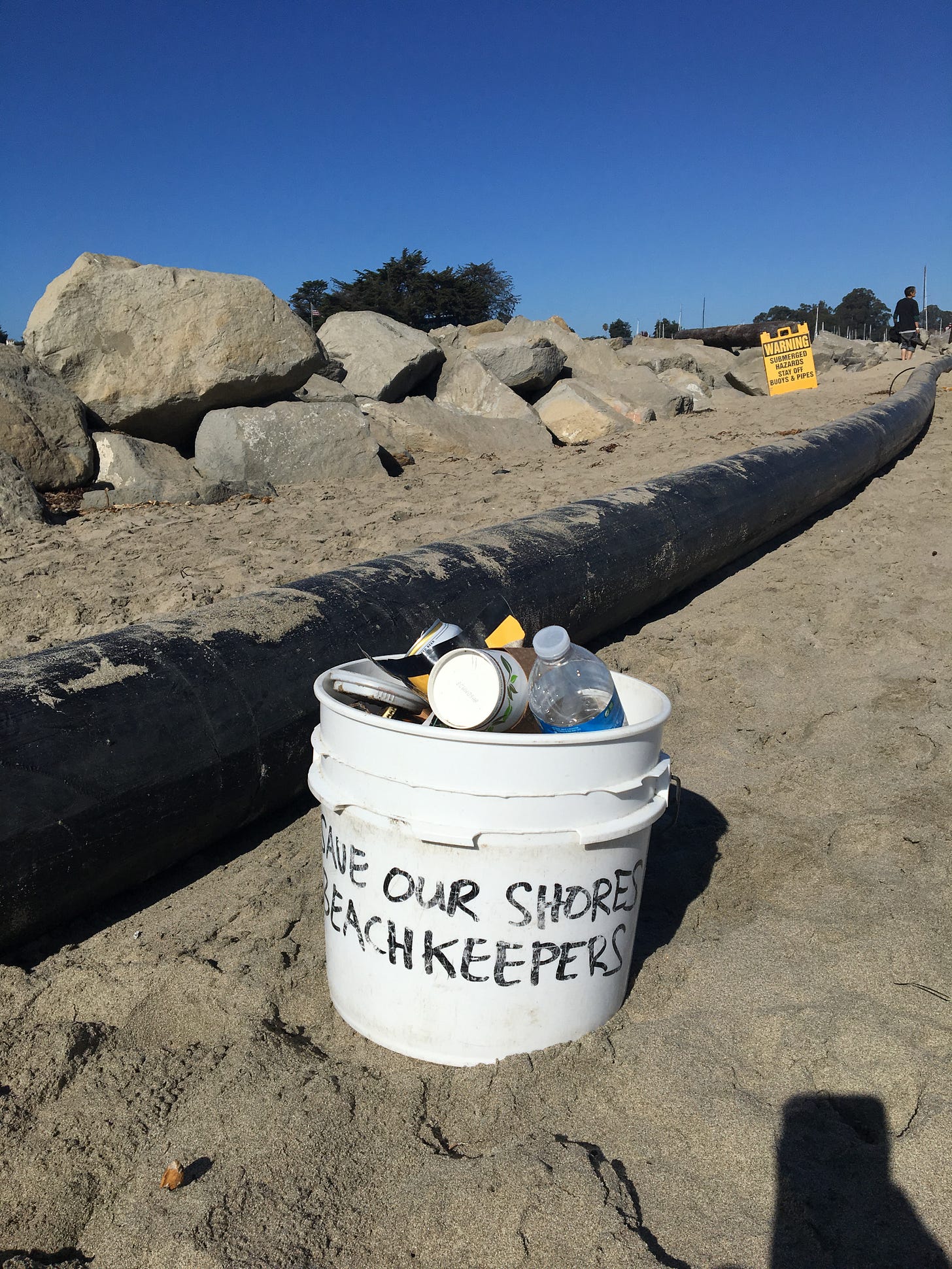It's Everything Change, not climate change
How education can get us thinking, and acting, differently...
Writer Margaret Atwood says we should stop calling it climate change. “It’s Everything Change,” she said in conversation at the UCSC Humanities Institute this week.

Rebranding this incredible moment on this planet surely takes work. Whenever I get down, my husband, Eddie, likes to remind me that I am not a superwoman, and I cannot do it all. But I can do something.
Making change on this planet is not impossible. We’ve seen movements make major changes in our lifetimes—getting #metoo-ed is a verb now in Hollywood.
Friends, we have some of the planet’s greatest thinkers working on climate solutions, so let’s get to work on something we can achieve. But to do that, we need to look at what skills we have.
How do I pinpoint my skill?
For years I’ve taught environmentally-themed writing classes at UCSC. About a third of the way through the quarter, my students grow frustrated. They just can’t digest the overwhelming amount of information about how humans have exacerbated our climate crisis.
“I’m tired of your generation telling my generation that we have to fix our climate crisis,” one of my UCSC students spouted early in the quarter. “You guys made the mess. You should clean it up.”
I see the same thing in my sons when we watch climate change documentaries. It’s 99% about the problem and 1% about possible solutions. We all end up feeling more hopeless, and way more depressed.
I’m going to share a deep dark secret with you all. When I was in high school, I was a cheerleader. I know, I know, you’d never imagine it from my cheery personality, but I was the chunky cheerleader rocking some serious splits on the football field.
On the sidelines though, I learned that there are people out there who are good at what they’re doing, and there are some that just aren’t, but all of them are trying. Regardless of the result, my job was to encourage their collaboration to win. One of my superpowers, it turned out, was supporting the skills of others.
Climate solution cheerleaders
The most successful climate educators start introducing students to solutions-based thinking early on. Heeding David Katz’s advice in my own writing classes, I’ve started spotlighting solutions from the start. And guess what? Suddenly, these future scientists and coders, engineers and doctors are arguing for the value of education to address our climate crisis.
In my class, a group of students thought up an incubator project to educate K-12 students about the cool solutions going on right in our community. To test it out, I started an environmental activism class at my sons’ school. My job wasn’t to teach, but to cheer on the ideas my students thought up.
And it worked!
The kids learned how to create environmental campaigns; they cleaned up our local beach, they wrote letters to local businesses to get them to go zero waste, and even helped our school go zero waste for a month.

How parents can help teachers integrate environmental education into rigid state standards
When I ask my university students who learned about the science of our climate crisis in K-12, only a handful them raise their hands.
Typically they fall into two camps: The youth who got a couple weeks in science class about plastic pollution and sea turtles; and the AP environmental science students who attended posh high schools.
We can do better!
There are so many organizations out there helping teachers bring hands on environmental education into their classrooms. And we can cheerlead their work by giving these great resources to our kids’ teachers.

Look deep enough and you’ll hear success stories about change-makers like 5th grade science teacher, Jessica Campbell, at Mt. Madonna School in the Santa Cruz Mountains whose students won the 2016 Presidential Youth Award for protecting the western snowy plover. Or Dave Murdock, science teacher at Champion Middle School in Ohio, whose students clean up parks and monitor stream quality.
But, too many teachers are overwhelmed—especially right now—with the basics of delivering state standards to students that they can’t think beyond their vast curriculum.
That’s where we come in, parent brigade.
Since we don’t have a ton of time, we need an easy, fast solution to help bring quality solutions-based environmental-ed into our kids’ classrooms. Here’s how:
Find a local organization doing cool stuff to protect the earth in your community. If you need ideas, subscribe to this newsletter (and email me!).
Ask if they’d do a series of virtual lessons in your kids’ classrooms, or better yet, for the whole school.
If they need cash, lobby your Parent Association at school. When my son’s 3rd grade class had NO science curriculum for the year, I asked our PTA for a small stipend and got enough to pay an educator to come teach them about environmental issues for over a month.
Your PTA doesn’t have cash because they spent it all on new PE locker rooms? Have your kids do a fundraiser at school, or reach out to local businesses to help fund a cool program! Most people want to feel like they are helping out. They just need easy ways to do it.
We can’t fix it all in one go, but educating our kids is a great place to start. And cheerleading the great work of others helps inspire other teachers to get out of their comfort zones and become change-makers themselves.
Got a great solutions-based environmental educator you want to highlight? Share their info here.
And if you’re successful, let us know and we’ll highlight you as a change-maker too.
Until next week, my friends…




Thank you for your insight into this problem we all have. Michele G-d speed to your post you got me to ride along side of you. I will listen to what you have to say and if i can HELP.